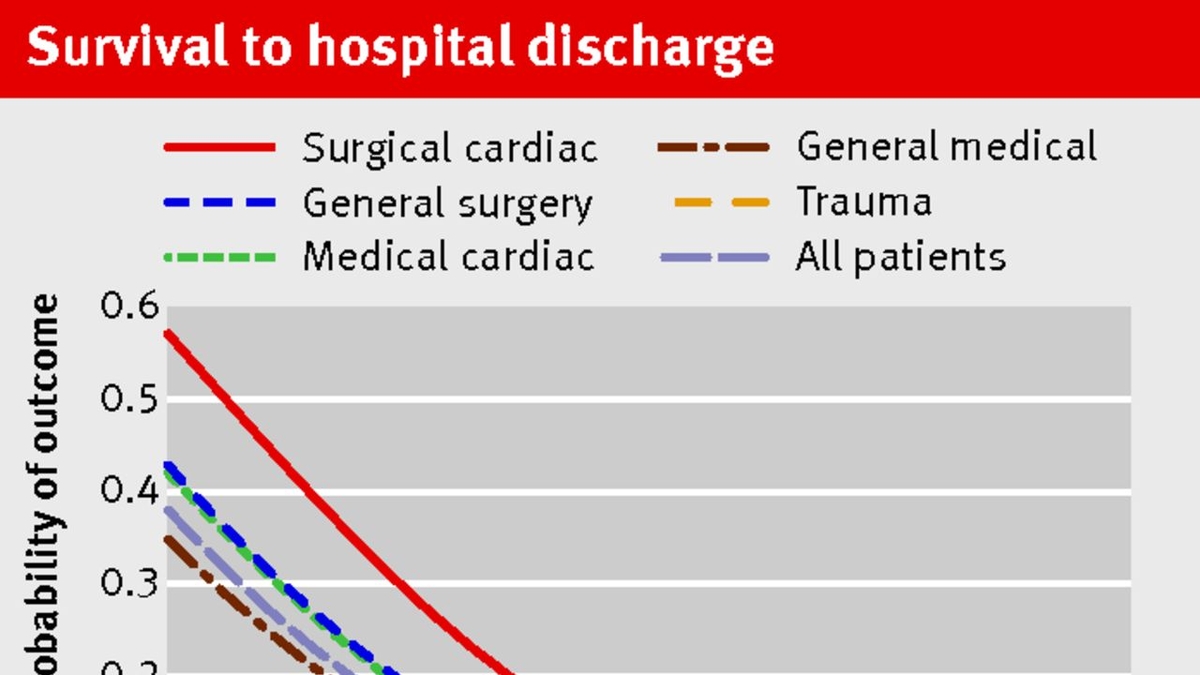A recent study published in The BMJ highlighted the crucial role of time in the success of in-hospital cardiopulmonary resuscitation (CPR). The comprehensive research, which analyzed 348,996 U.S. adults who experienced a cardiac arrest in the hospital between 2000 and 2021, found that the window for successful CPR diminishes rapidly with each passing minute. The study’s results underscore the importance of rapid response and intervention in cardiac arrest cases.
Key Findings from the Study
The study found that a person’s chance of surviving while receiving CPR for cardiac arrest in hospital declines rapidly from 22% after one minute to less than 1% after 39 minutes. Similarly, the likelihood of leaving the hospital without major brain damage also dwindles from 15% after one minute of CPR to less than 1% after 32 minutes without a heartbeat. Notably, the research also revealed a link between longer resuscitation times and lower odds of survival.
Understanding CPR and Its Importance
Cardiopulmonary resuscitation (CPR) is an emergency procedure performed in an effort to manually preserve intact brain function until further measures are taken to restore spontaneous blood circulation and breathing in a person who is in cardiac arrest. It is recommended for those who are unresponsive with no breathing or abnormal breathing, and is most effective if performed within seven minutes of the stoppage of blood flow. High-quality CPR, with few interruptions, sufficient speed and depth of compressions, and without excessively ventilating, is emphasized for maintaining the pressure gradient between the arterial and venous vascular beds, thus delaying tissue death and extending the opportunity for successful resuscitation without permanent brain damage.
Improvement Strategies in Practice
Given the time-sensitive nature of CPR, a quality improvement initiative aimed at enhancing the response time and survival in ward-based in-hospital cardiac arrest has been implemented. The initiative focused on the formation of dedicated cardiac arrest teams (CATs), improved resuscitation equipment, staff training, enhanced communication, audit framework, and performance feedback. The initiative resulted in significant improvement in return of spontaneous circulation (ROSC) rates, call center processing times, and CAT response times. However, there was no significant improvement in survival to hospital discharge post-intervention, suggesting a need for further interventions targeting improved survival rates.
Community Centric Approach to CPR Education
The American Heart Association is taking a community-centric approach to improve the survival rate of cardiac arrest victims. Recognizing the need for better and more standardized CPR education, efforts are being made to address the gaps in CPR education in U.S. schools. Further, evidence for improved survival and neurological outcomes through the implementation of ECPR programs remains limited, indicating a need for more extensive research and trials.
In conclusion, the study’s findings underscore the critical importance of prompt CPR intervention for cardiac arrest patients in hospital settings. The rapid decline in survival chances with each passing minute emphasizes the need for immediate and effective response during such emergencies. Strategies focusing on improving the quality of CPR, enhancing response times, and bolstering education around CPR can play a significant role in increasing survival rates and reducing the incidence of major brain damage post-cardiac arrest.
#Crucial #Role #Time #InHospital #Cardiopulmonary #Resuscitation #CPR



